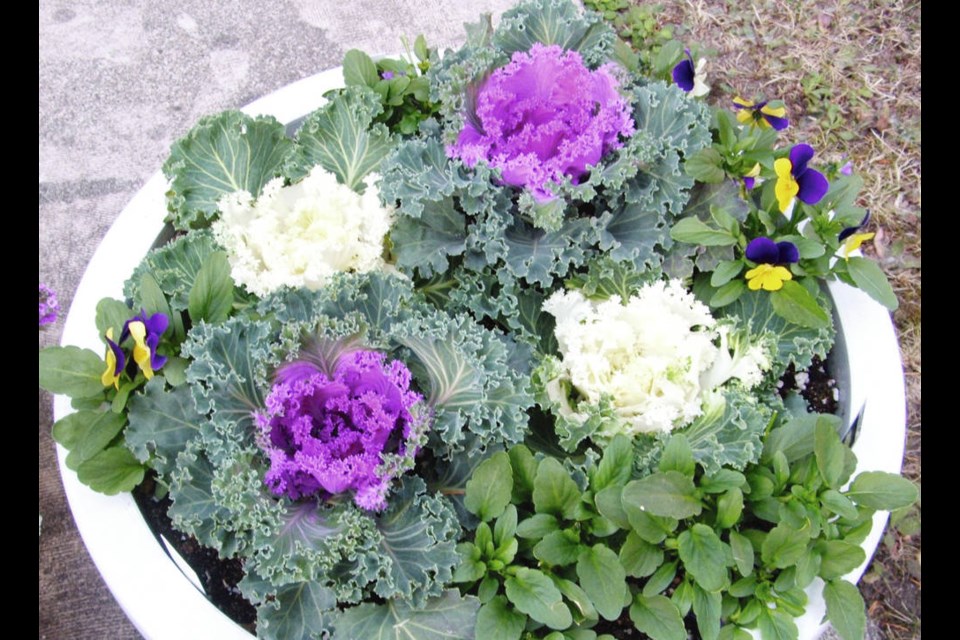As wildfire smoke swept over the Island, summer departed with unseemly haste.
On a very hot afternoon around two weeks ago, my potluck group of six met for the second time on the back lawn. We positioned ourselves, as before, two metres apart, facing the garden. Each of us brought our own dinner, drink, plate and utensils to ensure safe distancing.
It was a perfect summer evening, warm and still. The absence of shared food did not dampen the chatter as we caught up on all our recent life events. One of us brought the latest news of a chubby little grand-daughter just a few months old.
That was one of the last summer days. Soon after, clouds and smoke rolled in to cool and darken the atmosphere, and trigger an altered outlook on the garden. Suddenly, it was cool enough to comfortably replace the rangy-looking petunias on the patio with colourful young pansy and viola transplants, with a few crocus corms and miniature daffodil bulbs tucked into the soil between them for added spring interest.
Thrillers, fillers and spillers. The pansies and violas do well in the 30-centimetre-wide, bowl-shaped containers that I use for petunias. For mixed winter plantings, I use larger containers, sometimes the patio tubs I have for mixed summer flowers. They are 40-cm wide and 25-cm deep.
What you plant will depend on what you find at local garden centres. Some make a point of stocking a broad selection of small, container-friendly, cold-hardy plants for colour and interest during the fall, winter, and early spring. Visiting a few should reap a suitable collection. The expense is not great, since the plants used for fall and winter containers are small ones.
When choosing plants for the purpose, I sometimes think of the “thrillers, fillers and spillers” theory. For the “thriller” element, look for a plant with enough height to create a sort of punctuation mark in the container.
This might be a young, slender golden cypress or other tall, slender conifer such as a green or golden Irish yew, a yellow or red-twigged dogwood, a slender, upright ornamental grass or a colourful broadleaf evergreen. Osmanthus, or false holly, comes in variegated forms. One is the multi-coloured Goshiki.
I like to place a “thriller” a bit off-centre in the container, but it could also be placed at the centre with filler plants around it.
Many different cold-hardy plants can be used as fillers. Consider small evergreen grasses. Many are colourful, as are heucheras (coral bells). Winter flowering heathers, pansies and violas, small ferns, flowering kale and cabbage, and small berried skimmias are further choices.
For spilling over the pot edges, some ornamental grasses are wispy and spreading enough for the purpose. Examples are small, bronze or copper-coloured sedges (Carex). Small-leaved ivies, some ferns and a trailing euonymus such as Emerald ‘n’ Gold are more good choices.
Use a planting mix that drains freely of excess water. With the mix in the container, you might want to arrange your selected potted plants on the surface and move their positions around until you are entirely pleased with the effect.
When the planting is done, you may choose to push a few small flowerbulbs into spaces in the soil. Snowdrops, crocus, glory-or-the-snow (Chionodoxa), dwarf daffodils and grape hyacinths are all suitable.
If the container is to be placed under broad house eaves or some other rain shelter, check on the soil moisture regularly. Containers don’t usually need much watering in winter, but they mustn’t be allowed to dry out either.
Now, while all the landscape is still green and intact, begin looking for spaces that could be suitable homes for the small shrubs, grasses and evergreen perennials that you have potted. In the spring, when it’s time for transitioning back to summer container plantings, your wintered plants can be moved into those chosen sites.
Take note, when you buy the plants, of the sort of site (sun, shade) recommended for each one and the eventual size of the plant as it develops. These parameters will lead you to the most suitable locations possible.



